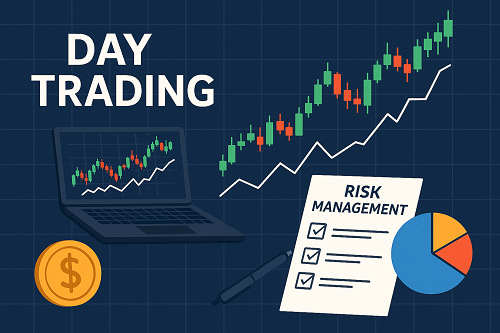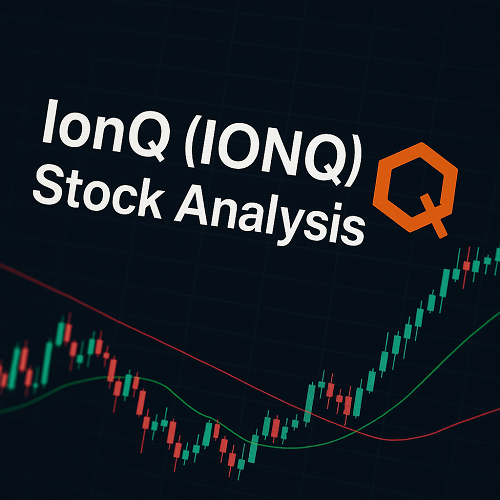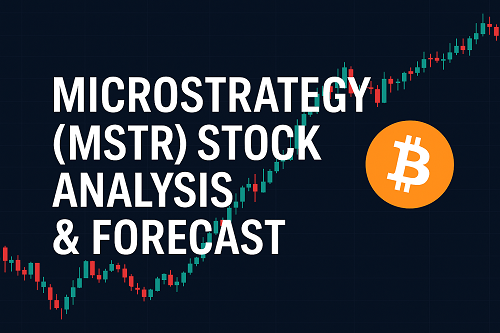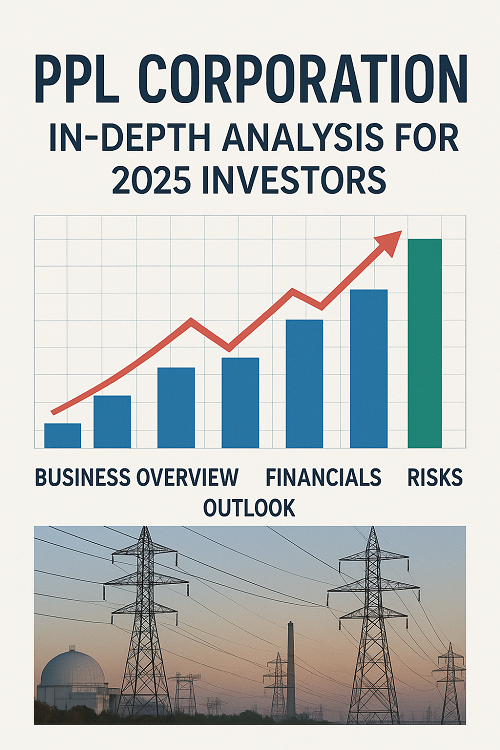Day trading has long drawn the allure of fast profits, independence, and the “get-in, get-out, profit” appeal. Yet the harsh reality is that most retail day traders fail. According to multiple studies, up to 95% of day traders lose money.
Why? Because success isn’t about luck — it’s about structure, discipline, execution, and continuous adaptation. The Investopedia article “Day Trader Basics” offers a solid foundation. But to beat that level of content, we need to go deeper: dissecting microstructure, execution nuance, real trade examples, modern tools, and actionable frameworks.
If you read this guide carefully (and apply it with discipline!), you’ll get a clearer, more detailed, and more actionable path toward real consistency in day trading.
What Is Day Trading (in 2025)?
Definition & Core Traits
Day trading refers to buying and selling financial instruments within the same trading day, closing out positions before market close to avoid overnight exposure.
Key traits:
- Intraday time horizon: trades may last seconds, minutes, or a few hours.
- High trade frequency: executing multiple trades in a session, often dozens or more.
- Reliance on technicals / microstructure over long-term fundamentals.
- Tight stop control, fast decisions, strong risk discipline.
Day Trading vs Swing Trading vs Position Trading
| Style | Holding Period | Edge / Focus | Capital Needs | Typical Tools |
|---|---|---|---|---|
| Day Trading | Seconds to hours (no overnight) | Price action, micro moves, volatility | Moderate to high (due to margin/leverage) | Tick data, DOM, order flow, news feeds |
| Swing Trading | Days to weeks | Trend continuation, pullbacks, pattern setups | Lower (less need for ultra-speed) | Daily/4H charts, indicators |
| Position Trading / Investing | Weeks to years | Fundamentals, macro, valuation | Lower | Fundamental models, macro analysis |
Hybrid models are possible (e.g. day + swing). But for this guide, our focus is on pure intraday trading.
Regulatory & Margin Rules: What You Must Know
Depending on your jurisdiction, day trading may be subject to special rules. For instance, in the U.S.:
- Pattern Day Trader (PDT) rule: If you execute 4 or more day trades within five business days in a margin account, and your day trades constitute over 6% of your total trading activity, you are flagged as a PDT.
- Minimum equity requirement: PDT accounts must maintain at least $25,000 as account equity.
- If equity falls below that, you may be restricted to cash-only trades or unable to day trade until restored.
Other jurisdictions differ (Canada, EU, Asia). Always check with your broker and local regulations before day trading.
Market Structure & Microstructure Essentials
To outperform, you must not just see charts — you must feel the market. That requires understanding microstructure:
Liquidity, Spread & Slippage
- Bid–Ask Spread: The cost (in essence) of entering and exiting. Tighter spreads help small intraday profits survive cost drag.
- Liquidity: Volume and depth matter. Thinly traded stocks or instruments with shallow order books bring risk of big slippage.
- Slippage: The difference between expected vs executed price — common in volatile or low liquidity environments.
Even a “winning” setup can fail if slippage and commission drag eats your margin.
Order Book, Level II, DOM (Depth of Market)
- Level II / Market Depth: Shows multiple bid/ask levels and the sizes at each price. Gives insight into where interest is clustering.
- Order flow reading: Interpreting how orders are consumed or pushed.
- Footprint / Volume Profile / Order Flow Tools: More advanced traders use footprint charts (showing executed volume at each price) or volume profile to identify supply/demand zones.
Role of Market Makers, Dark Pools & Internalization
Large institutional players, market makers, high-frequency traders, and dark pools all impact intraday price action. Understanding their probable behavior helps:
- Some orders are absorbed or hidden (dark pools).
- Market makers may step in to “pin” levels (within a range).
- Institutional momentum (e.g. block trades) often releases subtly into the tape.
Recognizing how institutional order flow works is a hidden edge many retail traders ignore.
Tools, Platforms & Infrastructure
Your tools are your lifeline. Poor tech = poor execution, lost edge.
Broker Selection: What Matters
Important criteria:
- Execution speed / latency
- Commission structure / fee transparency
- Reliability / uptime (especially during volatility)
- Access to advanced order types / API / hotkeys
- Supported instruments & margin / leverage
According to Investopedia’s recent review, Interactive Brokers is often ranked best overall for day traders, citing its pricing, tools, and reliability.
Market Data / Feeds
- Real-time data feed (full tick, not delayed)
- News / economic calendar integration
- Level II / depth / orderbook data
- Historical tick/volume data (for backtesting)
Charting & Execution Platforms
- Charting with overlays, multiple timeframes, custom indicators
- Order execution tools (quick entry / exit, hotkeys, one-click)
- Algorithmic bridging (e.g. connect signals to execution APIs)
- Simulators / paper trading mode
Some advanced traders also use co-location (placing servers near exchange hardware) or VPS hosting for low-latency execution.
Core Intraday Strategies
Below are proven strategies that experienced day traders use. Always adapt to your personality and risk tolerance.
Momentum / Breakout Strategies
- Opening Range Breakout (ORBO): Define a range in the first 15–30 minutes; trade a breakout above or below.
- Volume + news momentum: Catching moves when volume surges with breaking headlines.
- High relative strength scans: Stocks with significant early strength / weakness.
Gap Fade / Reversal Strategy
- Stocks gapping far above / below prior day close often “fade” back toward the average.
- Look for reversals after an overextended gap, when momentum cannot sustain.
VWAP / Mean Reversion Strategies
- VWAP (Volume Weighted Average Price): many day traders use crossovers around VWAP as support/resistance.
- Mean reversion: when price overshoots extreme levels intraday and reverts back toward mean.
Scalping
- Rapid in-and-out trades capturing tiny profits (a few ticks or cents).
- Requires excellent execution, discipline, and minimal friction cost.
Pair / Market-Neutral Intraday
- Trade correlated pairs (e.g. two stocks in same sector) to neutralize “market noise.”
- Long one, short the other; profit from relative divergence.
5.6 Event / News-Driven Trading
- Economic releases, corporate earnings, regulatory announcements.
- Requires speed, awareness, risk control; news can provoke whipsaws.
5.7 Discretionary vs Systematic Approaches
- Discretionary: judge in-the-moment setups (based on patterns, feel, order flow)
- Rule-based / Algorithmic: pre-coded entry/exit rules reduce emotional bias
Many successful traders use a mix: discretionary for entry and algorithmic for scaling or exits.
Risk Management & Money Management
Risk control is not optional — it’s the difference between survival and blowup.
Position Sizing & “1% Rule”
Never risk more than a small fraction of your capital on any trade (often 0.5% to 1%). Even if you’re confident, over-exposure is a fast path to ruin.
Stop Losses, Mental Stops, Trailing Stops
- Hard stops (automatic) are safer than just mental stops.
- Trailing stops help lock in profits as a trade moves in your favor.
- Avoid moving stops farther just because you “feel” it might turn — that’s emotional drift.
Risk / Reward & Expectancy
- A strategy that wins 50% of time with 1:2 R:R can have positive expectancy.
- Evaluate expectancy = (Win% × Average Win) – (Loss% × Average Loss).
Daily / Session Drawdown Limits
- If you lose a set percentage in a day (e.g. 3%–6%), stop trading and analyze.
- This prevents emotional revenge trading.
Diversification vs Focus
- Trading too many instruments dilutes edge.
- Focus on a few high-liquidity setups, especially while learning.
Hedging & Offsetting
- Use hedges (e.g. correlated index futures) to reduce exposure on directional bets.
Trade Execution Best Practices
Even the best setups fail if execution is sloppy.
Order Types & Smart Orders
- Market orders: fast but vulnerable to slippage
- Limit / Stop-limit: more control, but risk non-fills
- OCO (One Cancels Other), bracket orders, layered orders
Scaling In / Scaling Out
- Rather than entering full size at once, split orders to reduce entry risk.
- Exiting in tranches helps secure profit and reduce regret.
Avoiding Overtrading
- Many beginner traders overtrade, chasing multiple setups or trying to “make back” losses.
- Stick strictly to your predefined plan.
Managing Partial Fills, Adverse Price Moves
- If part of your order is filled, don’t force rest into poor price.
- Always monitor execution quality and adjust.
Overleverage & Illiquid Instruments
- Don’t let leverage seduce you.
- Avoid low-volume or penny stocks with erratic gaps.
Psychology, Discipline & Continuous Improvement
Emotions kill more accounts than bad setups.
Common Biases
- Confirmation bias: seeing what you want to see
- Recency bias: overreacting to the last trade
- Loss aversion: holding losers too long, cutting winners too early
Emotional Control & Routine
- Create a daily pre-market checklist.
- Use a trading journal: log setups, entries, exits, emotions.
- Review trades daily or weekly to extract lessons.
Handling Drawdowns & “Tilt”
- Expect drawdowns as part of the game; never try to “get back” emotionally.
- Stop trading if you’re frustrated or fatigued.
Incremental Growth
- Increase risk only after the strategy shows consistent positive expectancy.
- Never jump capital too fast.
Real-World Trade Walkthroughs
Here are two illustrative trades—one in equities, one in crypto—showing setup, execution & lessons.
Equity Example: Opening Range Breakout (Stock XYZ)
- Pre-market: stock gapped up on positive news
- Define range: from 9:30 to 9:45, high = 102.50, low = 101.80
- Setup: wait for pullback into near the range high (101.90–102.00)
- Entry: 102.05 with stop below 101.80 (range low)
- Target: trailing to capture breakout — partial exit at 103.00, final at 103.50
- Result: +1.4% move, risk 0.25% of capital
Lessons:
- Volume confirmation at breakout is essential
- Don’t over-leverage — keep size modest
- Use partial exit to lock in gains
Crypto Example: Momentum News Trade (Bitcoin)
- Trigger: unexpected regulatory announcement
- Reaction: BTC price jumps from 30,000 to 30,600 in minutes
- Setup: wait for a retracement, then ride the continuation
- Entry: 30,300 into the bounce, stop at 29,900
- Target: 31,200 (resistance zone)
- Result: +2.7% move, risk ~1% of account
Lessons:
- Crypto volatility is bigger — widen stop distance
- Beware of fake news reversals — always confirm with volume
- Always exit before extremes (fatigue, reversals)
These walkthroughs generalize — your execution, slippage, and risk will vary. Use them as teaching models, not guarantees.
Backtesting, Simulation, & Transition to Live
You can’t skip this stage.
Building a Trading Plan
Your plan should include:
- Strategy rules (entry, exit, stop, target)
- Risk parameters (max per trade, per day)
- Instrument list / scans
- Execution rules
- Journal & review process
Backtesting & Metrics
Use historical intraday data to test trades. Key metrics:
- Win rate
- Average win / loss
- Expectancy
- Max drawdown
- Sharpe ratio / Sortino / Calmar
Paper Trading / Demo
Simulate your strategy in real-time market conditions (no real capital). This helps train discipline and execution.
Transitioning to Live (Slow Scale Up)
- Start small: commit only 1%–5% of intended capital
- Monitor slippage, latency, deviations
- Adjust for real-world costs, emotional stress
- Only increase size once consistency proven over many trades
Scaling, Growth & Advanced Considerations
Once you’re consistently profitable, new challenges emerge.
Scaling Capital
- Larger size brings market impact and slippage
- Depth becomes crucial — you may need to avoid low-volume names
Algorithmic / Hybrid Models
- Automate parts: exit strategies, scaling, risk enforcement
- Use machine learning / quant overlay to detect regime shifts
Institutional Constraints
- Many institutional traders face size, liquidity, risk limits
- They may avoid highly volatile microcaps, prefer futures or ETFs
Alternative Markets & Instruments
- Futures / stock index futures: high liquidity, low slippage
- Options: for defined-risk plays
- Crypto derivatives / perpetuals: offer leverage but added complexity
- Forex: 24h market, different microstructure, spreads
Exploring multiple instruments diversifies your edge and helps adapt when one market is quiet.
Common Pitfalls & How to Avoid Them
- Chasing losses / revenge trading: Stop immediately after reaching daily loss.
- Overtrading: Stick only to setups that meet your criteria.
- Curve-fitting / overfitting strategies: Don’t optimize to past noise; test on out-of-sample data.
- Ignoring transaction costs / slippage: Always build these into your expectancy.
- Concentration risk: Don’t put all capital in one trade.
- Fall for “hot tip” / penny stock scams: Many traps exist, especially in microcaps.
Performance Tracking, Taxes & Record Keeping
Metrics & Journaling
Track:
- Instruments, entry/exit, timeframe
- % of capital risked
- Slippage, commissions
- Outcome, notes on what went well / poorly
- Weekly / monthly summaries
Analyze your stats (win rate, expectancy, drawdowns) over time.
Taxes & Jurisdiction Considerations
- In the U.S., wash sale rules, short-term vs long-term capital gains, business vs hobby classification matter.
- In Canada / EU / UK, rules differ — consult a tax professional.
- Keep detailed records: trades, costs, time stamps.
Legal Structure
- Some professional traders form an LLC / corporate entity to manage tax advantages and liability.
- Always ensure compliance with local securities laws, reporting, audits.
Is Day Trading Right for You?
Pros & Cons
Pros
- Potential for high return in short time
- Independence, flexibility
- Lower capital tied up (no overnight)
- Continuous feedback & learning
Cons
- High failure rate
- Intense psychological and emotional stress
- Fractions of seconds matter — you compete with professionals
- Big drawdowns are real
Suitability / Personality Fit
You should ideally have:
- Quick decision-making under pressure
- Discipline & rule-following
- Comfort with losses and uncertainty
- Enough capital to absorb drawdowns
Alternatives & Hybrid Models
- Swing trading or position investing if you prefer slower pace
- Algorithmic strategies taking emotion out of execution
- Part-time day trading (only on high volatility days)
Many successful traders blend intraday strategies with longer-term plays.
FAQs
How much capital do I need to start day trading?
Rules differ by jurisdiction. In the U.S., PDT rule mandates a minimum $25,000 for margin accounts. But practically, having at least $30,000–50,000 gives you enough buffer to manage risk, slippage, and allow your strategy room to breathe.
Can I make a living day trading?
Yes—but only a small minority do. Most traders lose. Consistency, risk control, mental resilience, and edge are prerequisites.
What is the success rate of day traders?
Literature suggests 90–95% lose money. Only a tiny fraction survive and scale.
How is crypto day trading different?
Crypto markets trade 24/7, with much higher volatility, lower institutional liquidity, and different microstructure (e.g. perpetual swaps, funding rates). Strategy parameters must adapt.
What tools do professional day traders use?
They use co-location, direct data feeds, footprint/volume profile tools, algorithmic bridges, execution APIs, and advanced order types.
Conclusion & Roadmap
Becoming a successful day trader is a journey more than a sprint. This guide gives you a framework — but execution, discipline, and consistent improvement are what separate winners from losers.
Suggested roadmap:
- Pick one market (e.g. stocks or futures)
- Learn microstructure tools & order flow basics
- Define one strategy (e.g. opening range breakout)
- Backtest + simulate rigorously
- Trade live with small capital
- Gradually scale up as edge proves consistent
- Expand strategies / instruments over time





 XAUT-USD
XAUT-USD  AMD
AMD  MARA
MARA  SHOP
SHOP  BULL
BULL  CL=F
CL=F